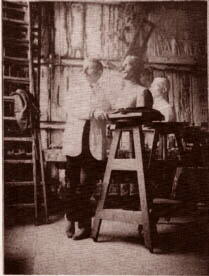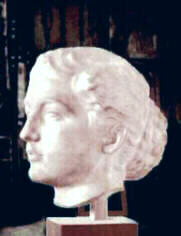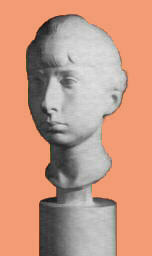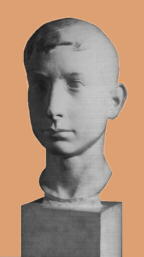| Professor Paul Roudié
perfectly defined the "Bande à Schnegg" : "It
is not sure that, despite the exhibition dedicated to the
Bande à Schnegg at the Musée Bourdelle in 1974, its
originality and its importance are well known even among
well-informed art lovers. There are several reasons for
this. The first one is that the young sculptors who met
in the 1900s around Lucien Schnegg to exchange ideas and
who displayed several times together between 1904 and
1930 had no pretensions about making a
"school": they neither built great theories nor
published any manifesto. More inclined to do than to say,
they were not truly scholars and they let their works
speak, distrusting all the movements ending with
"ism" that flourished at this time. |
They fiercely wanted to
be independent from official academic art as it was
taught in Art schools, supported by the authorities,
appreciated by a definite part of the society. To help
them in this attitude, they had a model and a supporter,
the great Rodin, with whom several of them collaborated
(Despiau, Pompon, Drivier, Dejean, Halou, Lucien and
Gaston Schnegg). Rodin was not sparing in his
encouragements of them. Paradoxically, however,
instead of being inspired by the tumultuous, restless,
lyric, art of the Master, for whom they felt admiration
and gratitude, they turned themselves toward a calm,
serene, reflective, more and more moderated, less and
less trimmed sculpture, searching simple volumes and
balanced compositions.
|




